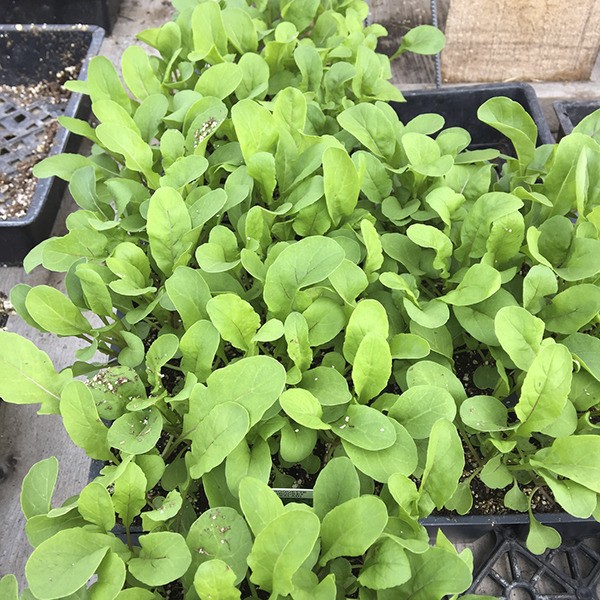Got the itch to start gardening, but find that conditions are still too cold or wet to dig in the dirt? Consider starting vegetable seeds indoors to satisfy that craving and get a jump on the growing season.
What to plant
The first step is to decide what seeds to plant. Some vegetables transplant more easily than others. (See sidebar at bottom.) In general, plants with large seeds (peas and beans) or deep taproots (carrots and radishes) transplant poorly and are best sowed directly into the garden.
The best vegetables to start indoors are the slow-maturing cole crops (such as cabbage, broccoli and cauliflower) and warmth-loving vegetables (like tomatoes, tomatillos and peppers). Starting these indoors will be worth your effort.
When to plant
Find out when you can safely transplant starts of the vegetable you want to grow into the garden; then count backwards on your calendar the weeks necessary to get that vegetable to a transplantable size.
From the time seeds are planted …
• Lettuce takes 2-3 weeks
• Cole crops take 4-5 weeks,
• Tomatoes take 5-7 weeks, and
• Peppers take 7-8 weeks.
For example, if you follow local custom and put tomato plants in your garden on June 1, plant tomato seeds indoors in mid-April. If you plan to put your tomatoes in an unheated greenhouse on May 1, plant seeds indoors in mid-March.
How to plant
Lots of different containers will work. They should be big enough to support the roots of the intended seedling and have drainage holes.
To prevent diseases, disinfect containers with 1 part bleach to 4 parts water and use sterile, well-drained potting soil. Do not use soil from the garden.
Fill containers with soil up to one-quarter of an inch from (or even level with) the top. Plant two seeds of the same variety per container at the depth recommended on the seed packet.
After planting, moisten the soil surface with a fine mist or place the container in a pan of warm water to absorb moisture from the base, but do not let the container stand in water for more than half an hour.
Place the newly planted seeds in a warm location (65-75 degrees). Once the seeds sprout, move them into a sunny south-facing window or provide supplemental lighting and water as needed.
If both seeds germinate, remove one plant by cutting it off at soil level after the first true leaves develop.
Starts should be transplanted into the garden when weather conditions are right for the plant and the root mass is solid. Do not wait until the roots become pot bound or start growing out of the drainage holes. About a week before transplanting, expose seedlings to outdoor conditions for increasing lengths of time each day so that they get used to their new growing conditions.
If you are tired of looking at seed catalogs, start some seeds indoors to give you a jump on the growing season and satisfy that urge to get into the garden.
For free gardening help, visit a local Master Gardener plant clinic. The clinics are from 9 a.m.-1 p.m. Mondays at the Clallam County Courthouse, 223 E. Fourth St., in Port Angeles. Bring your gardening questions, samples from problem plants and garden pests.
For more information, call the Plant Clinic Help Line at 417-2514.
Pearl of Wisdom
More seeds started indoors are lost to inadequate light than to any other factor. Since windowsill light usually is not sufficient, artificial lights such as inexpensive shop lights must be used. For adequate intensity, the lights should be 2 inches above your plants. This means you will have to raise the height of the lights as your plants grow.
Jeanette Stehr-Green is a WSU-certified Clallam County Master Gardener.
Ease of transplanting
• Easily survive transplanting:
Beet
Broccoli
Brussels sprouts
Cabbage
Cauliflower
Chard
Lettuce
Tomato
• Transplant fairly well but require care:
Celery
Eggplant
Kale
Kohlrabi
Leek
Onion
Pepper
• Difficult to transplant:
Bean
Carrots
Corn
Cucumber
Cantaloupe
Mustard
Peas
Radishes
Squash
Turnips


